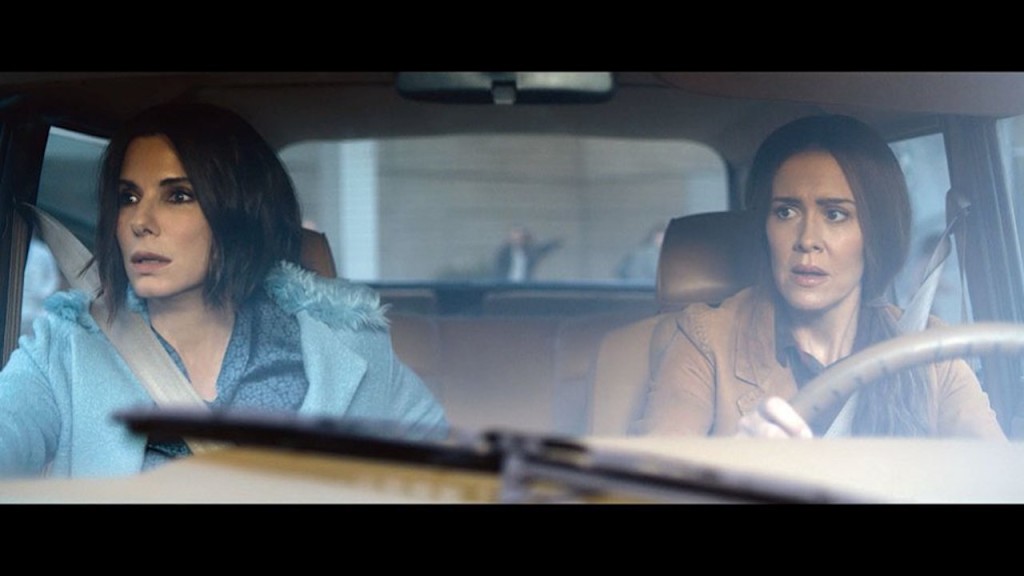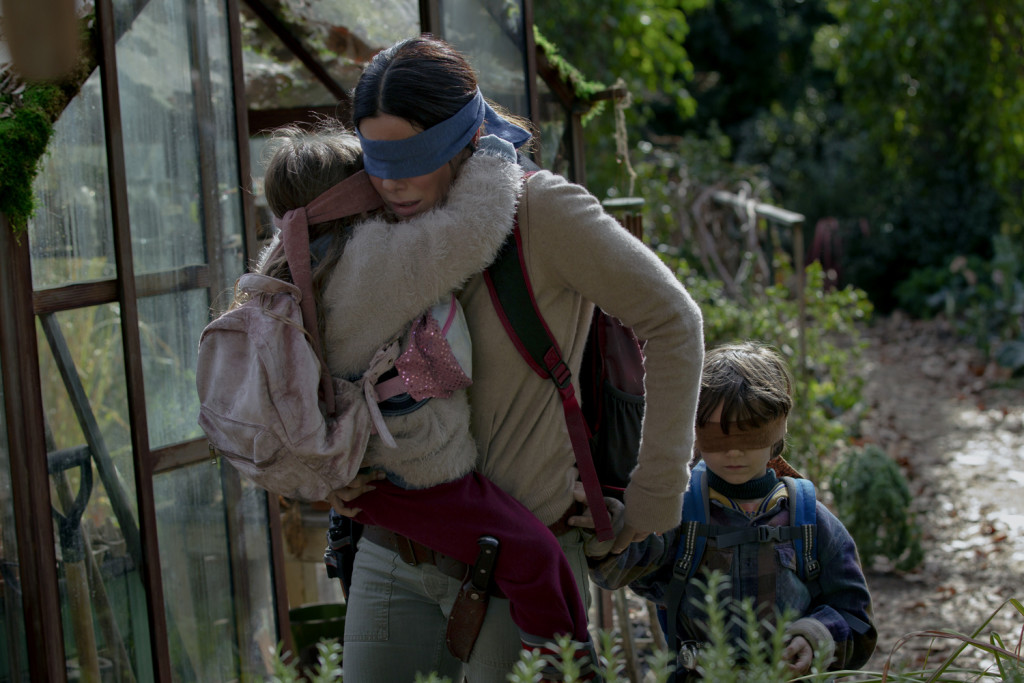Genre: Horror
Premise: (from IMDB) Five years after an ominous unseen presence drives most of society to suicide, a mother and her two children make a desperate bid to reach safety.
About: Bird Box started off as a novel. Screenwriter Eric Heisserer (Arrival) actually began adapting the novel before it was finished. How early on was this adaptation process? Heisserer would occasionally call Josh Malerman to see if it was okay to add something here or there in the movie, to which Malerman would reply, “Ooh, that’s good. Can I put that in the book?”
Writer: Eric Heisserer (based on Josh Malerman’s novel)
Details: 2 hour running time
It’s been a long time since I read the script for Bird Box but I remember liking it a lot. And not just for its concept. The script’s central idea – not being able to look at the monsters – was a brilliant way to keep the movie cheap. If the characters don’t see them, neither do we, and that means you get an expensive monster movie without having to create expensive monsters. And it’s not only that. Much of what scares people in horror movies isn’t the actual monster, but the threat of the monster, which is why you can get away with showing so little for so long. That’s the theory, anyway. Did this approach work for Bird Box? Let’s find out.
Bird Box had one of the best openings to a film all year. If we’re being honest, it’s hard to screw “world falling apart” openings up. Even the most basic imagery – people running for their lives, screaming, violence, chaos – is exciting to watch. But that’s been the problem as of late. Directors have been showing that and only that, and it’s gotten a bit stale. Susan Bier’s choices here feel much more intense, such as a random woman in the hospital banging her bloody head against the window than staring down the pregnant Malorie. Or Malorie’s sister, who’s trying to escape this chaos, driving them away before *seeing* one of these things, only to switch into suicide mode, weaving the car in and out of traffic while Malorie attempts to stop her. It was not only incredibly intense, but it brilliantly set up the movie’s hook – DON’T LOOK.
From there, Bird Box switches to a cross-cutting structure that stuffs Malorie into a suburban house with ten other characters right after the event, then occasionally cuts to five years later, where Malorie and two young children are attempting to navigate a boat down a river while all three are blindfolded, representing the new reality for anyone who survived the initial event. The three are attempting to get to a bunker full of people, which is conveyed via an opening radio voice over of a man explaining where the bunker is and how to get there.
So how did the movie hold up? Was it as good as the script?
For a good portion of the film, yes. Especially the first half. There was a genuine excitement born out of what just happened, not completely understanding the threat, and needing to learn the rules. John Malkovich is such a great actor and his unique personality brought an energy to the early house scenes that ensured we were always entertained.
From there, the first script change arrived (or at least, I don’t think this was in the script – maybe someone can confirm this). Bier and Heisserer expanded the mythology so that instead of only needing to see the monsters to turn suicidal, certain people would become influencers, tricking humans into believing it was okay to look, encouraging them to take off their blindfolds, only for it to be a lie. The duped party would see the monster and then commit suicide.
I understood why they did this. When you need to keep your eyes closed to live, you keep your eyes closed. Even if someone were to rip your blindfold off, you could still just shut your eyes. This way, there was an added threat. Especially because these “influencers” would pretend to be normal people. For the most part, this worked, as it led to two of the more exciting scenes in the film (a man trying to get inside of the supermarket and a man attacking the boat). It made the mythology a little murkier, but overall it was a clever choice.
Bier made a couple of choices that hurt the film, though. For starters, she placed these characters in a giant beautiful house. Not only that, but the inhabitants covered the windows with a series of perfectly crafted rainbow-esque paper, casting a beautiful spectrum of colors across the walls and characters at all times. It was in stark contrast to the dark dreary hopeless house that was painted in the script. And it wasn’t just that. It feels like more characters were added. Too many. This gave the big bright perfectly lit house a party atmosphere. I was supposed to feel scared. Instead I wanted to go out clubbing.
The critical moment for Bird Box came about 70% of the way into the film. A few scenes after letting a new member into the house, a middle aged British business man, we learn that he’s actually an influencer. He begins spouting his demon rhetoric and ripping the covering off all the windows, forcing everyone to look. One by one, all of the people start dying. If there were a meter on the side of every movie telling you, on a scale from 1 to 10, how well the current scene was working, the meter would’ve been at a 3 here. For the first time, it became evident that Bird Box’s conceit of never seeing the monsters was hurting it. This moment was the culmination of the pervious 70 minutes. It needed to be big. It needed monsters. Instead, we got a mildly threatening British man yelling a bunch of gibberish.
Another issue I wish they would’ve hashed out was the relationship between Malorie and the children. It was so cold as to be nonexistent. The reason this is a big deal is because the entire emotional thru-line of the 5 Years Later storyline is built on the connection between Malorie and those children. If you look at the major comp for Bird Box, A Quiet Place, that film put a ton of focus on establishing a connection between the parents and the children. Here they assume we’ll do that work for them, and that’s always a dangerous game to play. I never got the sense that Malorie had a connection to these two kids. I feel like that could be its own TV show – Assumptions In Screenwriting. It would cover assumptions writers make and the disastrous effects of doing so.
With that said, Bird Box is better than most of the movies Netflix makes. It’s stylish. It’s got big budget production values. The acting is strong. I have a feeling this will be a big hit for the streaming service.
[ ] What the hell did I just watch?
[ ] wasn’t for me
[x] worth the stream
[ ] impressive
[ ] genius
What I learned: I’ll leave this question up to you guys. Is never seeing the monster a good thing? Or, at some point, have you built up so much curiosity that you need to show it? Eric Heisserer, in an interview with Slash Film, is sticking to the film’s guns. “We realized the moment that one of us started talking about even small features of what the monster might be, or the antagonist, down to a specific silhouette of a shadow or an appendage that entered the frame somewhere, there was always someone else in the room who would say, “Well, that isn’t scary to me.” So it defeated the purpose. We kept pulling back.




